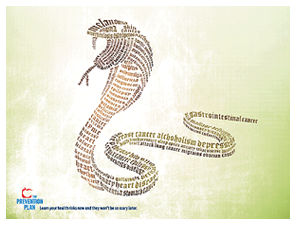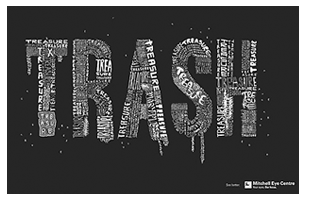- Prelude
- Editorial
- A Conversation with Sheela Gowda
- The DIY Artist with a Mission
- Discovering Novel Horizons
- A Conversation with Raqs Media Collective
- Manjunath Kamath
- Jitish Kallat- the Alchemist
- The Artist and the Dangers of the Everyday: Medium, Perception and Meaning in Shilpa Gupta's work
- An Attitude for the Indian New Media
- Weave a Dream-Theme Over Air or a Medium like Ether
- Installation in Perspective: Two Outdoor Projects
- Towards The Future: New Media Practice at Kala Bhavana
- Workshop @ Facebook
- Desire Machine: Creating Their Own Moments…
- Typography: The Art of Playing with Words
- Legend of a Maverick
- Dunhill-Namiki
- The Period of Transition: William and Mary Style
- The Beauty of Stone
- Nero's Guests: Voicing Protest Against Peasant's Suicides
- Patrons and Artists
- The Dragon Masters
- What Happened and What's Forthcoming
- Art Chennai
- Art Events Kolkata
- Winds of Change
- Art Bengaluru
- Mumbai Art Sighting
- Musings from Chennai
- In the News
- Previews
- Ascending Energy, Merging Forms: Works by Satish Gujral
- Re-visiting the Root
- The Presence of Past a New Media Workshop
- Taue Project
ART news & views
Typography: The Art of Playing with Words
Volume: 3 Issue No: 15 Month: 4 Year: 2011
by Nandini Bhattacharjee
 Typography primarily is the art of arranging type, type design and modifying type glyphs. It is often considered as a major part of advertising & brand communication, creating promotional material and marketing. If it is used properly, one can not only meaningfully conveys the message, but also strengthens the brand and the company.
Typography primarily is the art of arranging type, type design and modifying type glyphs. It is often considered as a major part of advertising & brand communication, creating promotional material and marketing. If it is used properly, one can not only meaningfully conveys the message, but also strengthens the brand and the company.
In visual communication, typography is a powerful and important design element. Particularly, in graphic design there is a lot more than just colours and layout; it relies heavily on typography as well. It's no lie that type treatments can make or break a design. That's because each character or type has its own unique and intrinsic qualities that evoke different expressions and messages. When used correctly, typography could be extremely evocative and effective art form and visual language. Typographic communication comes from not only creativity but also knowledge of form and function of each type and what they convey. Modern typefaces are powerful mediums of personal expression and visual / spatial experimentation. Any good designer knows the design is not just about making something visually appealing; it should also emphasize the message. In modern communication, particularly in advertising, typography has been very inspiring and has led many artists experiment with type treatments to achieve inspiring, unusual and beautiful results.
it relies heavily on typography as well. It's no lie that type treatments can make or break a design. That's because each character or type has its own unique and intrinsic qualities that evoke different expressions and messages. When used correctly, typography could be extremely evocative and effective art form and visual language. Typographic communication comes from not only creativity but also knowledge of form and function of each type and what they convey. Modern typefaces are powerful mediums of personal expression and visual / spatial experimentation. Any good designer knows the design is not just about making something visually appealing; it should also emphasize the message. In modern communication, particularly in advertising, typography has been very inspiring and has led many artists experiment with type treatments to achieve inspiring, unusual and beautiful results.
 To illustrate what I am talking about, here are some typographic print advertisements that show how important it is to push the boundaries and rules in design. You can see how even the smallest adjustments of typefaces affects rhythm, legibility and overall visual quality of the message one is trying to communicate.
To illustrate what I am talking about, here are some typographic print advertisements that show how important it is to push the boundaries and rules in design. You can see how even the smallest adjustments of typefaces affects rhythm, legibility and overall visual quality of the message one is trying to communicate.
Words are graphics, too. They have form. They create positive and negative space and, depending on the font, a personality all their own. Words are visually more powerful than we often give them credit for.
Sometimes less is more
 Clearly with the last two sets of examples the strong typography won out over the large image in driving home the message. Often times our first reaction it to put a large graphic with something to help support or sell the message; but, as designers, we need to learn to edit our image impulses. White space can really help to focus the audience's attention to the message.
Clearly with the last two sets of examples the strong typography won out over the large image in driving home the message. Often times our first reaction it to put a large graphic with something to help support or sell the message; but, as designers, we need to learn to edit our image impulses. White space can really help to focus the audience's attention to the message.
Typography can be so versatile that humour gets enhanced if typefaces are used appropriately to convey a message. For instance,  creating works of typography art that have dual-meanings. For instance, there are T-shirts or logos that one can buy with the word “Hate” embroidered across the front, however, if you stand close to a mirror wearing this shirt, the typography has been designed so that backwards the word reflected is “Love.”
creating works of typography art that have dual-meanings. For instance, there are T-shirts or logos that one can buy with the word “Hate” embroidered across the front, however, if you stand close to a mirror wearing this shirt, the typography has been designed so that backwards the word reflected is “Love.”
There are many illustrations to depict dual-meaning typography in word illusions. Typography illusions are often the ones that seem to be one thing, but on close examination are actually something else. Sometimes, dual-meaning typography comes in problem-solving illusions, with answers that are obvious only after you have figured out the illusion puzzle.
Typography can make or break a brand. The importance of trade and the communications that are needed for brand to exist are all due to the use of the right type. Advertising and connecting to customers both rely on how the product information is showcased by type. The wrong kind of type can cause a product promotion to fail in the consumer market. Using the right type with a specific typography design can create a trademark that is recognizable with consumers in a local market as well as consumers in a global market. An excellent example of the right kind of typography being used is that of the Coca Cola trademark that is now known to the world over as the Coke font.
brand to exist are all due to the use of the right type. Advertising and connecting to customers both rely on how the product information is showcased by type. The wrong kind of type can cause a product promotion to fail in the consumer market. Using the right type with a specific typography design can create a trademark that is recognizable with consumers in a local market as well as consumers in a global market. An excellent example of the right kind of typography being used is that of the Coca Cola trademark that is now known to the world over as the Coke font.
 Closing thoughts
Closing thoughts
 There is more to typography than just visual communication and advertisement conversion rates. It also about creating interactions that is honest and beautiful. Good typography allows people to connect and get excited. It has a fascinating way to remain etched in our memory leaving people wanting more and engaged which leads to an audience and fan following. Now you may understand the true potential of typography and its effects that guide our awareness in making choices in our day to day lives.
There is more to typography than just visual communication and advertisement conversion rates. It also about creating interactions that is honest and beautiful. Good typography allows people to connect and get excited. It has a fascinating way to remain etched in our memory leaving people wanting more and engaged which leads to an audience and fan following. Now you may understand the true potential of typography and its effects that guide our awareness in making choices in our day to day lives.
Image Courtesy: The Author